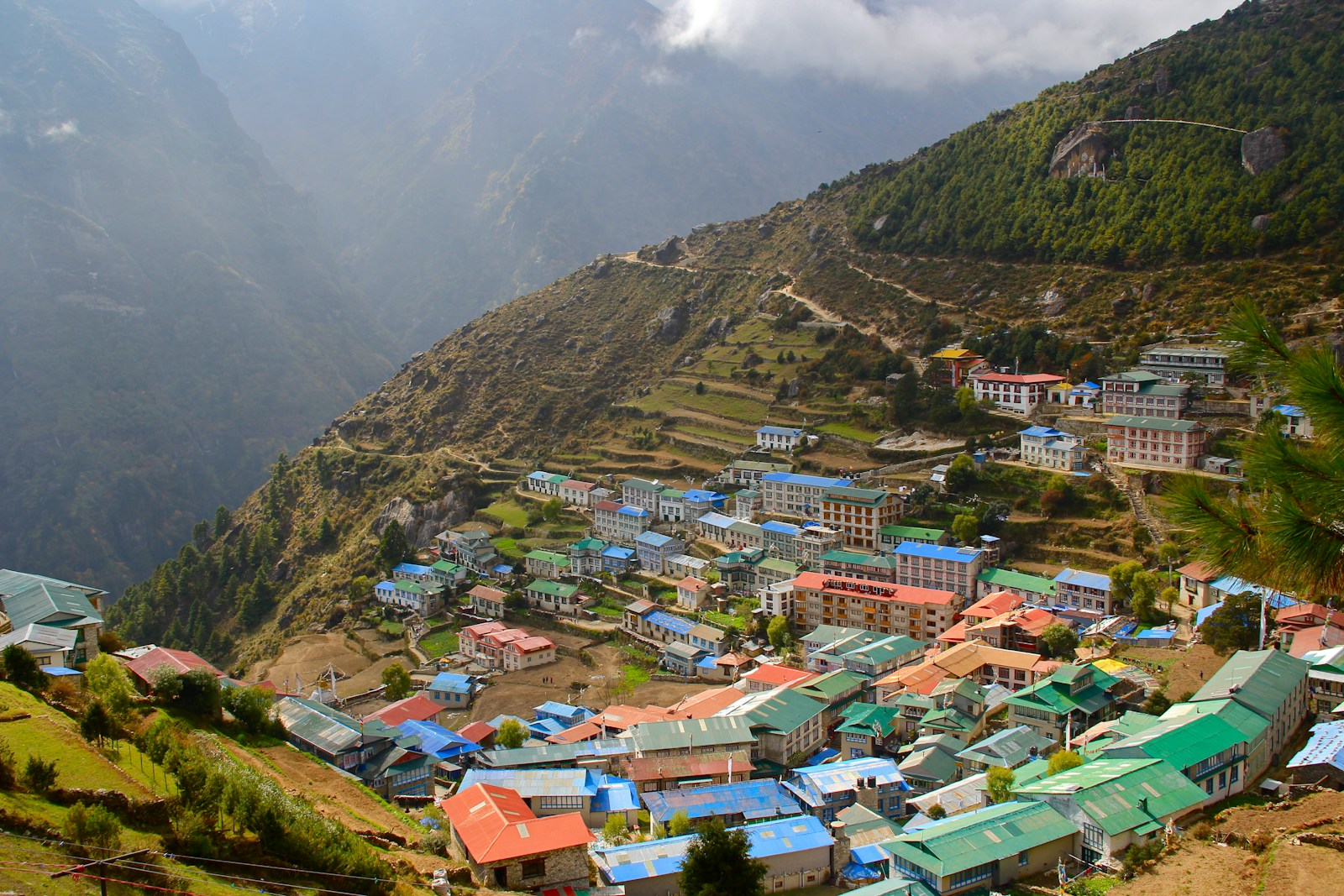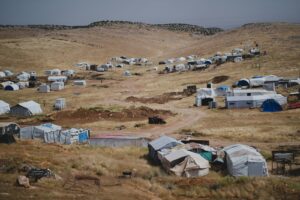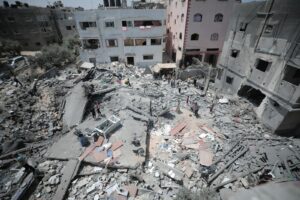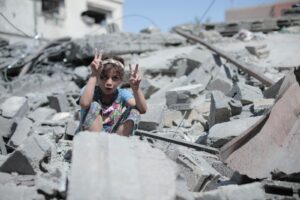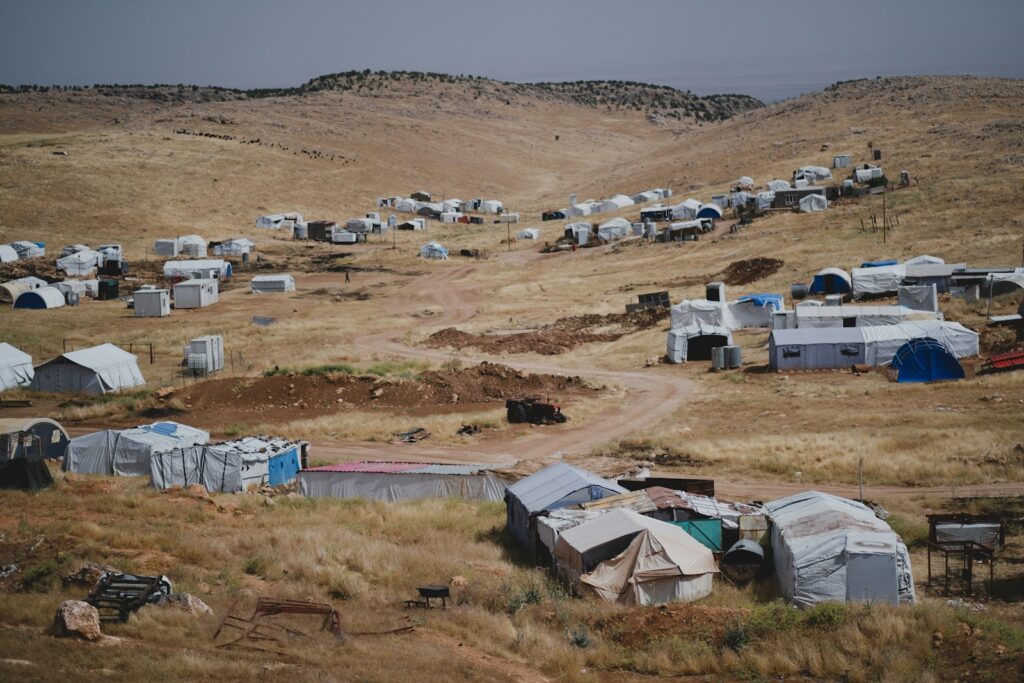1. The Uninvited Guest: A Powerful Earthquake
In the early hours of January 2025, while most of us were still snug in our beds, the earth decided it needed a little stretch. Unfortunately, this stretch was in the form of a powerful earthquake that rocked the remote regions of Tibet and parts of Nepal. Over 120 lives were tragically lost in this event, reminding us once again of nature’s unpredictable temperament.
The tremors began with a gentle sway, which quickly escalated into a full-blown earth jig. Buildings wobbled like jelly, and the ground beneath seemed to ripple as if it had taken a cue from a dance-off. People rushed outside, some in pajamas, others clutching their smartphones, all united in a moment of shared bewilderment.
But why did this happen? The earth’s crust is like a giant jigsaw puzzle, with pieces that occasionally grind against each other. In this case, the tectonic plates beneath the Himalayas decided to have a little disagreement, resulting in a seismic party that no one had RSVP’d to.
2. The Aftermath: A Region Reeling
Once the earth settled down and the dust began to clear, the true extent of the devastation became apparent. Buildings and homes were reduced to rubble, roads were cracked open like eggshells, and the landscape bore the scars of this natural upheaval. Yet, amidst this chaos, stories of heroism and resilience began to emerge.
In the towns and villages, people banded together, offering food, shelter, and comfort to those who had lost everything. Volunteers from all over quickly mobilized to provide aid, proving that even when the ground shakes, the human spirit remains unshaken. It was heartwarming to see communities rallying around their own, like a tightly-knit family.
The government, along with international organizations, swung into action. Emergency services were deployed, and relief efforts were coordinated to ensure that help reached even the most remote areas. Rescue teams, equipped with modern technology, worked tirelessly to locate survivors, their efforts akin to finding needles in a haystack.
3. The Science Behind the Shakes
Understanding earthquakes can seem as complex as a PhD thesis, but fear not! We’re here to break it down with the simplicity of a nursery rhyme. The earth’s crust is made up of giant slabs called tectonic plates, which float on the semi-fluid layer beneath. When these plates decide to play a game of bumper cars, we experience earthquakes.
This particular earthquake was a result of the Indian Plate pushing against the Eurasian Plate, a tectonic tango that’s been going on for millions of years. The Himalayas, magnificent as they are, are actually the result of this ongoing geological dance. When the pressure between these plates becomes too great, the energy is released in the form of an earthquake.
Seismologists, the folks who study these tremors, use magnitudes to measure the size of an earthquake. In this case, the earthquake registered a significant magnitude, which explains the extensive damage. It’s like comparing a gentle nudge to a full-blown shove; the latter is bound to leave a mark.
4. Resilience in the Face of Adversity
In the wake of the earthquake, stories of resilience and bravery began to surface. Take, for instance, the tale of a small village in Tibet where a group of schoolchildren, led by their teacher, took refuge under their sturdy desks, singing songs to keep their spirits high. Their teacher, a quick-thinking hero, ensured that they remained calm and safe until help arrived.
Meanwhile, in a bustling town in Nepal, a local shopkeeper turned his store into a makeshift shelter, offering food and blankets to those in need. His generosity was matched by many others who opened their doors and hearts to strangers, proving that kindness knows no boundaries.
The affected communities, though shaken, were not broken. They demonstrated remarkable resilience, rebuilding their lives with determination and hope. In the midst of tragedy, they found strength in unity, reminding us all that the human spirit can withstand even the fiercest of storms.
5. The Role of Technology in Disaster Response
In today’s digital age, technology plays a crucial role in disaster response and management. When the earthquake struck, social media platforms became vital communication tools, allowing people to share information, locate loved ones, and coordinate relief efforts. Hashtags like #TibetNepalQuake2025 trended globally, drawing attention to the crisis.
Drones were deployed to survey the affected areas, providing real-time data to aid workers on the ground. These aerial perspectives were invaluable in assessing the extent of the damage and identifying areas in need of urgent assistance. It’s amazing how a device typically associated with capturing stunning landscapes can become a lifeline in times of disaster.
Moreover, mobile apps designed for emergency situations enabled users to alert authorities, find safe zones, and access first aid information. These technological innovations demonstrated how, when used effectively, they can save lives and expedite recovery efforts.
6. The Global Response: A United Effort
The international community responded swiftly to the earthquake, with countries and organizations around the world pledging support. Aid poured in, from monetary donations to essential supplies, showcasing a global solidarity that transcended borders. It was a reminder that in times of crisis, we are all part of one human family.
Humanitarian organizations like the Red Cross and UNICEF were on the frontline, coordinating relief efforts and providing much-needed assistance to those affected. Their teams worked tirelessly, often in challenging conditions, to ensure that aid reached the most vulnerable populations.
In the midst of this global response, individual acts of kindness shone brightly. From schoolchildren organizing bake sales to raise funds, to celebrities using their platforms to promote awareness, people from all walks of life contributed in their own unique ways. It was a testament to the power of collective action and empathy.
7. Lessons Learned: Preparing for the Future
Every disaster presents an opportunity to learn and improve our preparedness for future events. In the aftermath of the earthquake, governments and organizations conducted thorough assessments to identify areas for improvement. These evaluations were crucial in developing strategies to mitigate the impact of future seismic events.
Education and awareness campaigns were launched to educate communities on earthquake preparedness, emphasizing the importance of having an emergency plan and kit. Schools incorporated earthquake drills into their routines, ensuring that students know exactly what to do when the ground starts to shake.
Infrastructure resilience became a focal point, with efforts to reinforce buildings and roads to withstand future quakes. Engineers and architects collaborated to design structures that can flex and bend, rather than break, in the face of seismic activity. These forward-thinking measures aimed to minimize damage and save lives in the future.
8. The Role of Media: Spreading Awareness
In the wake of the earthquake, media outlets played a pivotal role in spreading awareness and information. News channels, both local and international, provided real-time updates on the situation, keeping the world informed of the unfolding crisis. Their coverage was instrumental in mobilizing support and resources.
Journalists on the ground reported on the human stories behind the headlines, shining a light on the resilience and bravery of those affected. Their narratives captured the attention of audiences worldwide, fostering empathy and understanding for the challenges faced by the impacted communities.
Social media platforms amplified these stories, allowing individuals to share their experiences and connect with others. This digital dialogue created a sense of global solidarity, with people from diverse backgrounds coming together to support a common cause.
9. A Glimpse of Hope: Rebuilding and Recovery
As the dust settled and the initial shock subsided, the focus shifted to rebuilding and recovery. The road to recovery was long and arduous, but the affected communities faced it with determination and hope. Reconstruction efforts were underway, with the aim of not only restoring what was lost but also building a more resilient future.
Governments and aid organizations worked hand in hand to provide the necessary resources for rebuilding homes, schools, and infrastructure. The process was slow but steady, with each brick laid representing a step towards healing and renewal.
In the hearts of those affected, hope blossomed like a flower after a storm. The earthquake had left its mark, but it could not extinguish the spirit of perseverance that burned brightly within them. With time and support, they were determined to rebuild their lives and emerge stronger than before.
10. Conclusion: A Resilient Spirit
As we reflect on the Great Tibet-Nepal Earthquake of 2025, we are reminded of the fragility of life and the power of resilience. While the earth’s tremors left a trail of destruction, they also revealed the strength and unity of the human spirit. Communities came together, strangers became friends, and hope triumphed over despair.
In times of crisis, we are called to be our best selves, to extend a helping hand, and to stand in solidarity with those in need. The earthquake may have shaken the ground, but it could not shake the bonds of humanity that connect us all.
As we move forward, let us carry the lessons learned, the stories of courage, and the spirit of resilience with us. Together, we can build a future that is not only prepared for the challenges ahead but also rooted in compassion and empathy.
For more insights on how technology and digital solutions are shaping the future, visit Thenionee and explore the innovative ways we can enhance our world.
Note: The information presented in this blog post is based on fictional events for illustrative purposes.
Read Here

